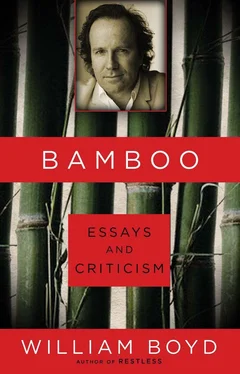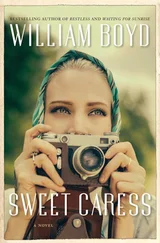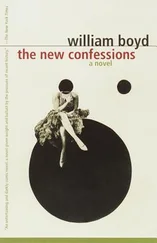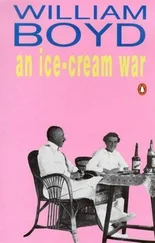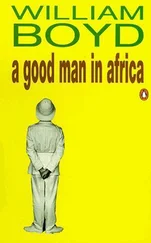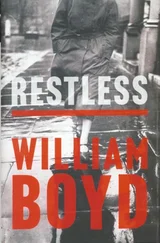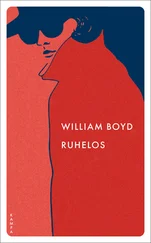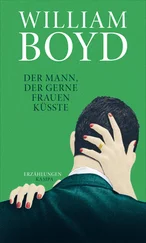10. The late painting Rooms by the Sea (1951) exhibits this tendency at its most emphatic. The sea looks like it’s bad trompe l’oeil . The door of the room seems to open directly and impossibly on to the water. There is no sense of receding distance in the sky or of the horizon. Through another door we glimpse some furniture as featureless as a dentist’s waiting room. A wedge-shaped block of sunlight lights the floor and wall, and in the room beyond another lucent parallelogram mimics the first. The plaster wall is roughly, almost carelessly painted, short brush-strokes clearly visible. Such mundanity, such absence of brio. Sun, sea and shadow are all we have to go on. So how do we explain this painting’s enduring power to move and affect us? What abstract nouns brew in this refulgent atmosphere? Eternity? Solitude? Bliss? Transience? Emptiness? I suspect the answer lies in the individual viewer, but nothing in the painting, or its title, makes any overt effort to provoke portentousness.
11. One of the few remarks Hopper made about his work is very telling. Asked what made him choose a particular subject — a hotel lobby, a house in the dunes, a cinema usherette — Hopper said: “I do not exactly know, unless it is that I believe them to be the best mediums for a synthesis of my inner experience.” This is another way of saying that his paintings are all about mood.
12. Wallace Stevens is a great American poet. He is “American” in the same sense that Hopper is “American”: they are both in their own way unique and uniquely a product of their country. No European poet is like Stevens even though Stevens’s work is replete with references to European civilization. Stevens, a deeply educated man who loved European culture, was even more stay-at-home than Hopper. He never left the USA at all.
Stevens wrote an essay entitled: “The Relations between Poetry and Painting.” In it, he states, “No poet can fail to recognize how often a detail, a propos or remark, in respect to painting, applies also to poetry.” A few pages further on he says, “The world about us would be desolate except for the world within us.” This, it seems to me, is what is going on when we look at a Hopper painting. The “world about us” of the subject matter — the couple in a hotel room, a group of people in a night-time diner, the secretary in the office — is pervaded and invaded by the “world within us.” Hopper’s simple paintings encourage that interchange, what Stevens calls the “migratory passings to and fro, quickenings, Promethean liberations and discoveries.” Strong stuff with powerful after-effects. To provoke such Promethean liberations and discoveries with such studious, careful artlessness makes Hopper the great American painter of the twentieth century. Perhaps it makes him the Great American Painter, full stop.
2004
The True Story
The origins of “Nat Tate” go back a fair distance. In 1987 I published my novel The New Confessions which took the form of a fictional autobiography. Reviewing it, Bernard Levin said, “hypnotised by its autobiographical form I found myself riffling through the pages for the photographs.” “Photographs …?” I thought, “I’ve missed a trick there.” Then some years later I was invited to contribute to a book called David Hockney’s Alphabet , in which twenty-six writers were asked to provide a short text — of any sort — to accompany Hockney’s graphic depictions of each letter. I was given the letter “N” and wrote a biographical memoir of a wholly fictional francophone Laotian writer called Nguyen N, who had briefly flourished in Paris between the wars. I quoted a letter from N to André Gide and I cited his celebrated work of aphoristic philosophy, Les Analects de Nguyen N (Monnier, Toulon, 1928). At the launch party for the book I was engaged in protracted conversation with a guest who claimed to remember reading about N, and indeed had a French bookseller searching for a first edition of Les Analects . It was an awkward few minutes and I thought it best to leave enlightenment for another day.
In both cases it was not the idea of a hoax that intrigued me so much as the ability to make something entirely invented seem astonishingly real. I began vaguely to formulate the idea of taking the fictional biography mode even further into the area of verisimilitude and, some years ago, started collecting discarded photographs — from junk shops, house-clearance sales, brocantes in France — with a view to one day writing a “life” tricked out with all the artefacts of a real biography — illustrations, notes, bibliography, index and so on.
Thus when, last year, Karen Wright, the editor of Modern Painters magazine (on whose editorial board I sit), started talking to me about the forthcoming New York issue — and was wondering if there was a way of getting fiction into the magazine — I realized immediately that here was the perfect opportunity. “Why don’t I invent a painter?” I said, knowing I already had the raw materials to hand. And so I duly did and so Nat Tate was born, lived for three decades and died.
I placed Tate in a period of twentieth-century artistic history that I was already fascinated by — namely the 1950s in New York, which saw the emergence of the New York School of artists and the birth of Abstract Expressionism. This was the era of Jackson Pollock and Action Painting, of de Kooning, Kline and Motherwell. It was the first time that the full glare of hype and media interest transformed a group of impoverished, unknown artists almost overnight into national and international celebrities, and with that renown came the more destructive elements of sudden wealth, notoriety, groupies, drugs, booze, jealousies, acrimony and premature death. This background had everything I needed for Nat and as I began to evolve the details of his brief life I began to invent characters — his foster parents, fellow artists, gallery owners — whose personalities would fit the photographs I had collected.
It was a complex process — but hugely enjoyable — and as it enlarged I started factoring real people into the Nat Tate story — the poet Frank O’Hara, Georges Braque, Franz Kline, Picasso and Larry Rivers amongst others. I began to feel like Dr Frankenstein. Nat Tate became my benign, doomed monster: I had his photo in front of me, I had put together all the ingredients of his short, tragic life; he seemed, even in manuscript stage, almost to live and breathe. The search for authenticity went further — some of Nat Tate’s drawings were created, and a large abstract oil. I approached Gore Vidal and John Richardson (Picasso’s friend and biographer), both of whom I knew, and asked them to “reminisce” about meeting Nat in the 1950s — which they sportingly and readily agreed to do.
But at the same time as I worked to provoke immediate credulity I knew that the story could not withstand sustained analysis — far too much was invented. Indeed one of the key witnesses to Nat’s life — an English writer called Logan Mountstuart — was a character taken from one of my short stories published in The Destiny of Nathalie X in 1995. The book was, in the end, studded with covert and cryptic clues and hints as to its real, fictive status. For me, the author, this was part of the pleasure — a form of Nabokovian relish in the sheer play and artifice — and the fundamental aim of the book, it became clear to me, was to destabilize, to challenge our notions of authenticity. First would come belief — the thing looked so wonderfully genuine, beautifully produced, full of photographs — then doubts would set in, alarm bells begin distantly to ring. But then the reader would come across — say — Gore Vi-dal’s recollections, and there would be a picture of Frank O’Hara and a Frank O’Hara poem mentioning Tate and credulity would be established again for a while — before suspicions crept back in. What was created was a form of reverse propaganda. Not truth disguised by lies, but “Truth” peeled away to reveal the true lie at the centre.
Читать дальше
